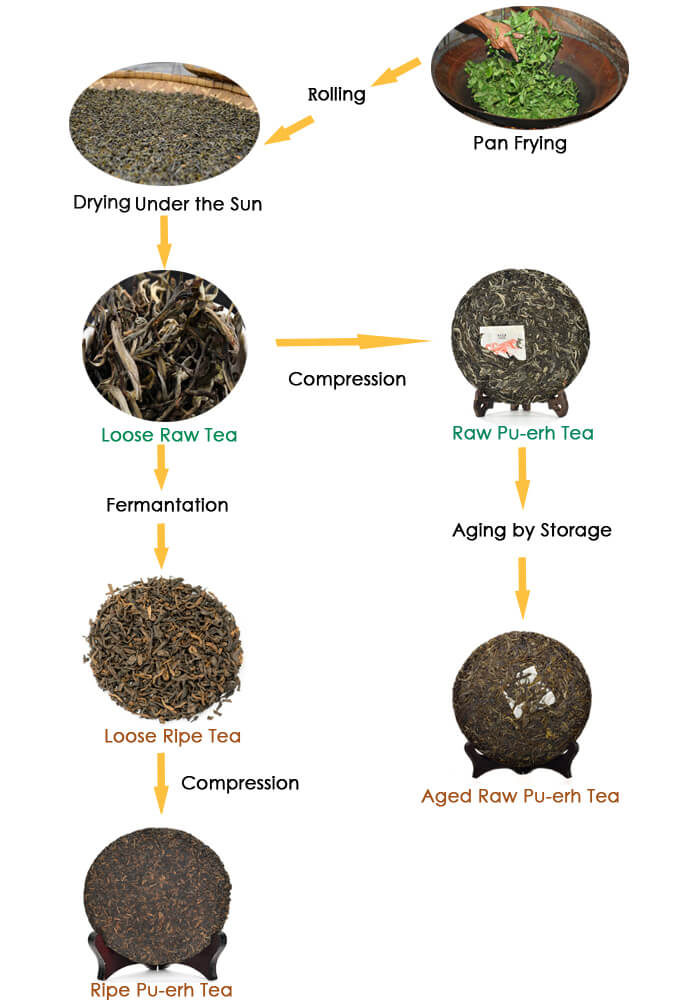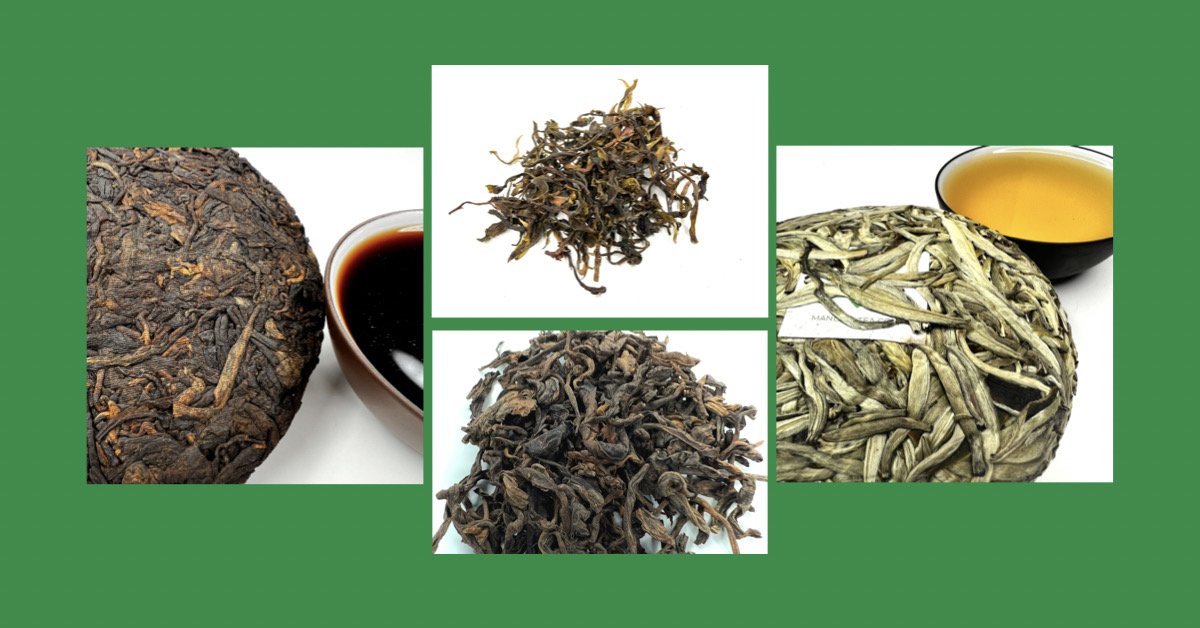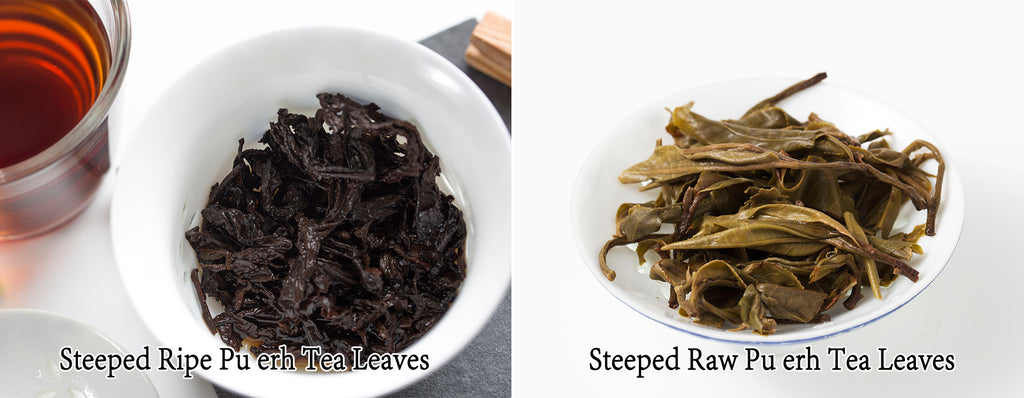ripe vs raw pu erh tea
- Blog
- ripe vs raw pu erh tea
Well now, let me tell ya ’bout them two kinds o’ Pu-erh tea—ripe and raw. They’s both made from the same kinda leaves, but how they’re treated makes all the difference in the world, I reckon. So, y’see, it starts out the same way for both of ‘em. First, they pluck them leaves right off the tea plants. Then they let them leaves wither in the air, just like you’d let a shirt hang out to dry on the line. After that, they gotta cook ‘em up real quick, either by pan-frying or steaming, and then roll ‘em up real nice before they dry them out under the sun. But where the real difference comes in is what happens after that.
Raw Pu-erh Tea (Sheng Pu-erh)
Now, if you’re talkin’ about the raw kind, they let them leaves just age naturally over time. It’s a slow process, real slow-like. The leaves, they stay kinda green, and the tea tastes a bit sharp and strong, almost like a fresh-cut haystack in the summer. Some folks say it’s got a little bitterness to it, too, but that’s part of its charm, I reckon. When you brew it up, the leaves still look plump and fresh, almost like they’ve been kept in the cool shade for a good long while.
If you drink raw Pu-erh, you might notice it feels light and lively, but it’s also got a bit of a punch to it, especially if you let it steep too long. Some folks even say it helps clear your mind, like a good walk in the country air after you’ve been cooped up inside all day. Over time, the raw Pu-erh changes, though. It don’t taste quite the same after it’s been sittin’ around for a few years, but that’s the thing with it—it gets better, just like fine wine.

Ripe Pu-erh Tea (Shu Pu-erh)
Now, ripe Pu-erh, that’s somethin’ else. They take them same leaves, but instead of lettin’ them age slowly, they rush it along. They do somethin’ they call “wet-piling”—a fancy name, but what they really do is pile up the leaves and sprinkle water on ‘em, like makin’ a big ol’ wet mound of tea. They let them sit in a warm place for a good long while, sometimes a few months, to ferment. This process speeds things up and makes the tea taste all smooth and mellow, like the tea’s been sittin’ around in a dark cupboard for years, but without waitin’ so long.
When you brew up ripe Pu-erh, them leaves come out lookin’ all dark and broken, almost like they’ve been through a bit of a rough time. The color of the tea is a deep, chestnut brown, almost like a pot roast that’s been sittin’ in the oven for a good long while. It don’t have that sharp, bitter taste that raw Pu-erh has. Instead, it’s earthy and rich, and it can feel a little bit sweet, almost like a good bowl of stew after a long day’s work.
What’s The Difference Between Raw and Ripe Pu-erh?
Well now, if you’re wonderin’ what makes them two types so different, it’s all in how they’re aged. Raw Pu-erh, like I said, gets to age slow-like. Ripe Pu-erh, they rush it along, and that makes it taste a whole lot smoother, but also a little more predictable. Some folks like raw because they say it’s got more of a kick, and it’s like a wild horse that can’t be tamed. But others prefer ripe because it’s smoother and easier on the ol’ stomach.

I’ve heard tell that Pu-erh tea, no matter which kind it is, has some mighty good health benefits. Folks say it can help clean up your arteries, lower your cholesterol, and even help with weight loss. It’s like drinkin’ a good medicine, but one that don’t taste bad! Some folks say it helps with digestion too, but I reckon you’ll have to try it for yourself to see.
How to Brew Pu-erh Tea
Now, if you’re gonna brew this tea, you gotta make sure you do it right. For raw Pu-erh, I’d say don’t go too heavy with the leaves at first. Start with a little, see how it tastes, and then go from there. You want to give it a quick rinse with hot water, and then steep it for just a minute or so. The taste will change with each steep, so you can keep going until it’s just right.
For ripe Pu-erh, it’s a little easier, since it’s already been aged and all. You can use a bit more tea, and you won’t need to rinse it as much. Steep it a little longer, and you’ll get a rich, dark brew that’s smooth as silk.
Conclusion

Well, I reckon that’s about all there is to it! Whether you like raw Pu-erh or ripe Pu-erh, it’s up to you, but they sure do both have their own special ways of making you feel good. One’s got a bit more fire, and the other’s smooth and easy, but both’ll warm you up on a cold day. Just remember, it ain’t just about the tea—it’s about the time you take to enjoy it.
Tags:Pu-erh tea, ripe pu-erh, raw pu-erh, Sheng pu-erh, Shu pu-erh, Chinese tea, tea brewing, health benefits of pu-erh, tea types
© Copyright 2025 Qianwei Tea | Theme developed by sitemap